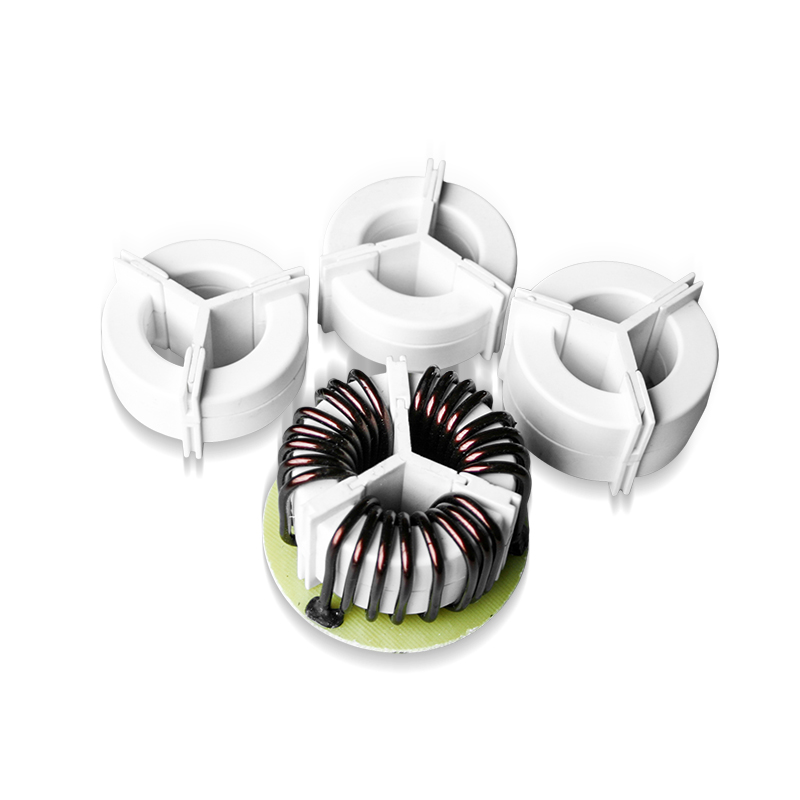The soft magnetic characteristics of amorphous metal provide lower core losses than standard iron-based ferrite cores. These characteristics enable designers to reduce size and power loss while improving efficiency in common mode chokes, differential input current transformers and DC-DC converters.
High Power Efficient / High Electrical Resistance
The core of a transformer contains a ferromagnetic shapeless shapeless metal alloy. The amorphous core is soft magnetic and has high attractive vulnerability, low connectivity and high electrical resistance. This type of inductor core has high saturation magnetic induction, high permeability, light weight and small size. It is widely used in power distribution transformers and inductive devices due to its excellent magnetic properties.
Amorphous Nanocrystalline Core also have higher resistance to mechanical stress and a lower magnetic loss at temperature. This helps reduce the risk of damage and improves overload capacity. The random atomic structure of the amorphous metal creates superior magnetic properties. This results in a lower hysteresis loss and an extremely high permeability across a wide frequency range.
Iron-Nickel based amorphous cores have a very high residual permeability and a large Curie temperature. These cores are suited for common mode chokes and are ideal for applications requiring high levels of RF noise suppression. To help our customers design their circuits accurately, we have provided a scaled down model of a core with 5 stripes of amorphous alloy simulated.
Solid and Strong Structure
These amorphous alloy strips are laminated into various rectangular shapes and bonded with an adhesive rated for a continuous operating temperature of 155 deg C. The resulting structures have good power handling capability and low core loss.
These characteristics are improved by the use of a nanocrystalline FeCo-based alloy that has good soft magnetic properties, a lower magnetostriction and high Curie temperatures. The alloy can also be annealed to reduce its magnetoelastic anisotropies that are the major source of core losses in conventional inductors.
Intelligence Protection
Amorphous metals and nanocrystalline alloys offer the designer the ability to design common mode chokes (CMC) with an impedance relative permeability more than twice that of Mn-Zn ferrite. This provides greater common mode rejection at higher frequencies while allowing for lower core sizes and overall component size reduction.
Amorphous and nanocrystalline cores are ideal for applications such as EMI common mode filtering, watt hour meters for household and industrial use and ground fault current interrupters (GFCIs). They provide high permeability at higher frequencies, superior saturation and low core loss compared to iron-based amorphous cores.
They deliver high full magnetic flux density, low coercivity and low noise, making them an excellent choice for differential input inductors, boost PFC chokes and Hall effect sensor concentrators. They are also an excellent replacement for ferrite cores in high current output transformers.
Custom Designs
Common mode chokes made from nanocrystalline alloy offer superior performance compared to traditional ferrite cores. Operating at a higher magnetic induction level and a wider temperature range enables these cores to be smaller in size while providing high power efficiency. This helps reduce power loss in switching applications and provides a more desirable output.
Amorphous nanoscopic cores are used in high-end EMI filters for industrial and medical equipment. They are used to suppress high current RF transient pulses that occur during voltage peaks in switch-mode power supplies, variable speed drives and adjustable frequency converters.
The soft magnetic characteristics of amorphous metal provide lower core losses than standard iron-based ferrite cores
Empfohlene Produkte
-
 Mehr anzeigen >>
Mehr anzeigen >>
Nicht-toroidale C-Schliffe amorphe nanokristalline Kerne
Industry: Amorpher nanokristalliner Kern
-
 Mehr anzeigen >>
Mehr anzeigen >>
EHC-VCT-Serie für Stromversorgung
Industry: Stromwandler
-
 Mehr anzeigen >>
Mehr anzeigen >>
Transformatorkerne Amorphe nanokristalline Kerne
Industry: Amorpher nanokristalliner Kern
-
 Mehr anzeigen >>
Mehr anzeigen >>
Amorphe nanokristalline Induktorkerne
Industry: Amorpher nanokristalliner Kern
-
 Mehr anzeigen >>
Mehr anzeigen >>
Hochpräzise amorphe nanokristalline Stromwandler
Industry: Stromwandler
-
 Mehr anzeigen >>
Mehr anzeigen >>
Rechteckige Hystereseschleifenkerne
Industry: Amorpher nanokristalliner Kern
-
 Mehr anzeigen >>
Mehr anzeigen >>
Hochlineare Stromwandler
Industry: Stromwandler
-
 Mehr anzeigen >>
Mehr anzeigen >>
Gleichtaktdrossel amorphe nanokristalline Induktoren
Industry: Amorphe nanokristalline Induktoren
-
 Mehr anzeigen >>
Mehr anzeigen >>
Gleichtaktdrosselkern
Industry: Amorpher nanokristalliner Kern
-
 Mehr anzeigen >>
Mehr anzeigen >>
Transformatorkerne Amorphe nanokristalline Kerne
Industry: Amorpher nanokristalliner Kern
-
 Mehr anzeigen >>
Mehr anzeigen >>
Ringspalt-Transformatorkerne Amorphe nanokristalline Kerne
Industry: Amorpher nanokristalliner Kern
-
 Mehr anzeigen >>
Mehr anzeigen >>
Rechteckiger Kern Amorphe nanokristalline Kerne
Industry: Amorpher nanokristalliner Kern

 English
English 中文简体
中文简体 Deutsch
Deutsch 日本語
日本語

